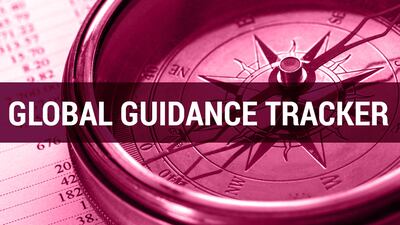Asia Pacific
With the US BIOSECURE Act waiting for a Senate vote, there are signs it may be prompting some Chinese firms to look at their operations. In the meantime, two legal experts in China suggest a range of coping strategies for companies that may be deemed "of concern."
Already one of the world’s largest pharmaceutical markets, China has tremendous growth potential, but significant policy and market changes are rocking the basis of competition. Multinational biopharma corporations cannot succeed in this new environment unless they fundamentally reinvent their business models to adapt to sweeping change.
Already one of the world’s largest pharmaceutical markets, China has tremendous growth potential, but significant policy and market changes are rocking the basis of competition. Multinational biopharma corporations cannot succeed in this new environment unless they fundamentally reinvent their business models to adapt to sweeping change.
Pipelines in bioconjugates continue to develop, from ADCs to XDCs, with radionuclide drug conjugates (RDCs) and antibody-oligonucleotide conjugates (AOCs) leading the expansion.
Interim results from the Phase III REMARK study presented at WCLC showed the Chinese company’s second-generation ALK/ROS1 inhibitor met its primary endpoint as a first-line therapy in ALK-positive advanced NSCLC.
With the US BIOSECURE Act waiting for a Senate vote, there are signs it may be prompting some Chinese firms to look at their operations. In the meantime, two legal experts in China suggest a range of coping strategies for companies that may be deemed "of concern."
Amneal has marked its entry into China after receiving its first product approval in the market. Meanwhile, the firm has also outlined US approvals for two generics currently suffering from shortages.
Biocon has made two key appointments to the management team of Biocon Biologics following a recent change in CEO for the biosimilars business.
Nichi-Iko says that remediation activities at its Toyama plant in the wake of a suspension over GMP violations mean that there may be delays to supply.
Japanese generics giant Sawai appears to be turning a corner, but the impact of National Health Insurance pricing revisions continues to hold the firm – and the rest of the country’s generics industry – back.
To tackle the increase in demand for remdesivir in India amidst the second wave of COVID-19, Gilead Sciences is helping local licensees to scale up production of the product, including by providing API supplies. The company is also donating at least 450,000 vials of the Veklury brand “to help address the immediate needs of Indian patients.”
Neuraxpharm has expanded its footprint outside of Europe with the launch of its first product in Japan, in the form of the Buccolam value-added midazolam product gained through a deal with Takeda.
The nod will help unlock a national market for the partners’ Dupert (fulzerasib) in which roughly 50,000 people are expected to be newly diagnosed with lung cancer harboring the KRAS G12C mutation in 2025. Meanwhile, two other homegrown rivals are also closing in on marketing clearances in China.
Stay up to date on regulatory guidelines from around the world with the Pink Sheet's Guidance Tracker. The complete Global Pharma Guidance Tracker, with sortable and searchable listings going back to 2014, is available online.
Stay current on regulatory guidelines from around the world with Medtech Insight's Guidance Tracker. Over 40 documents have been posted on the tracker since its last update.
Non-Japanese firms without offices in the country may submit documents for approval filings in English, subject to certain conditions.
The Pink Sheet Drug Review Profile explores the US FDA’s approval of vadadustat to treat anemia in chronic kidney disease patients on dialysis. A complete response letter cited the risk of drug-induced liver injury, but postmarketing data from Japan reassured reviewers.
Industry says it is ready to work with the government on the recommendations from a major review of Australia’s health technology assessment system that covers areas such as discount rate reductions and setting up a separate budgetary allocation to temporarily subsidize access to certain drugs.
Developments in India and Pakistan are designed to standardize how drug companies disclose their expenses associated with health care professionals.
Under the new drug approval innovation measures, Korea will cut the review and approval period of new drugs to 295 days from 420 days and increase the number of expert reviewers to enhance review capabilities.
ADVERTISEMENT


![Spotlight On RDCs, AOCs As Leading Novel Bioconjugates[Updated]](https://web.insights.norstella-labs.com/resizer/v2/3M7ZAWZOBNK7NG4A4WDOIFG6DU.jpg?auth=392a1fdb3cfacb29445720c412410e598dbcc5f90f14857652cd498bd0faa0fb&width=400)











